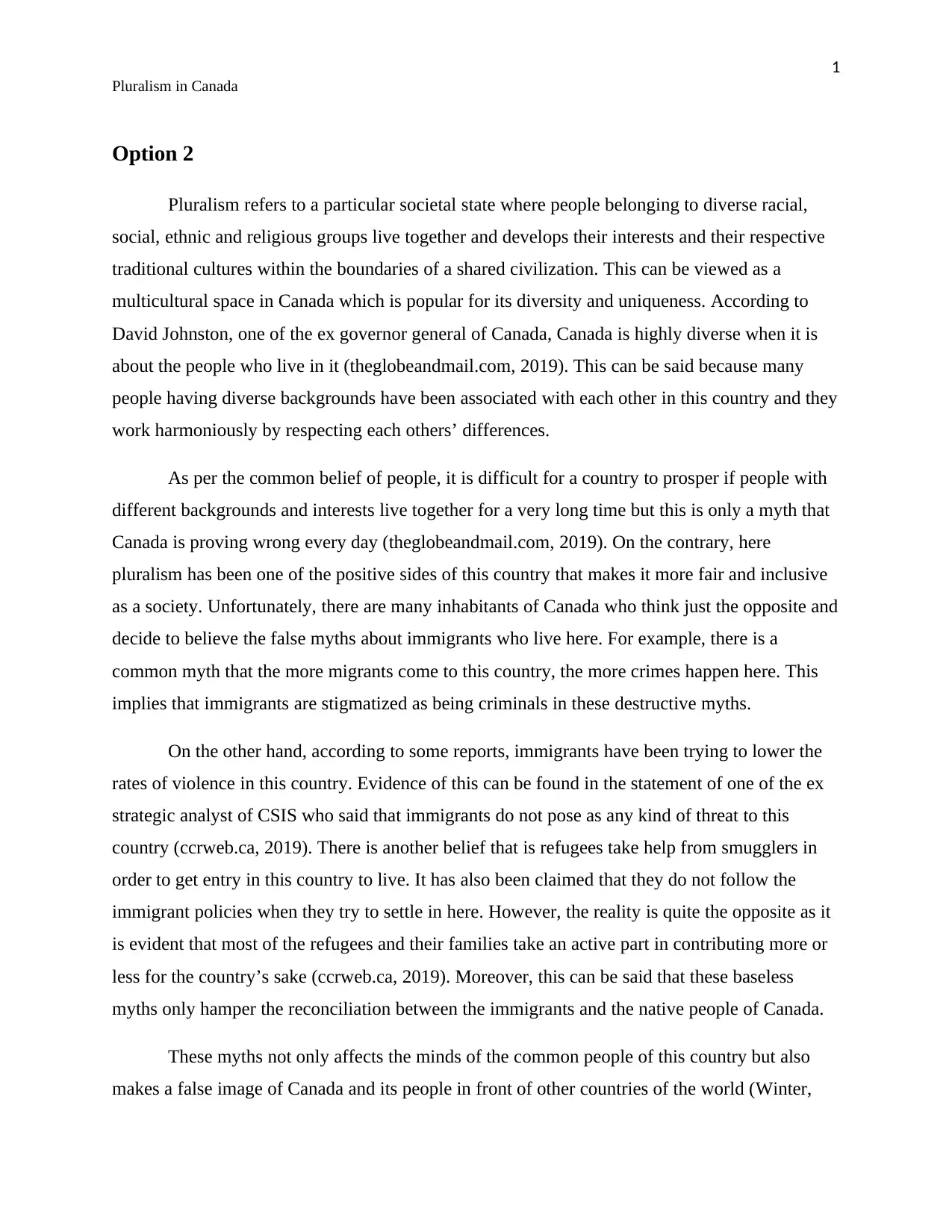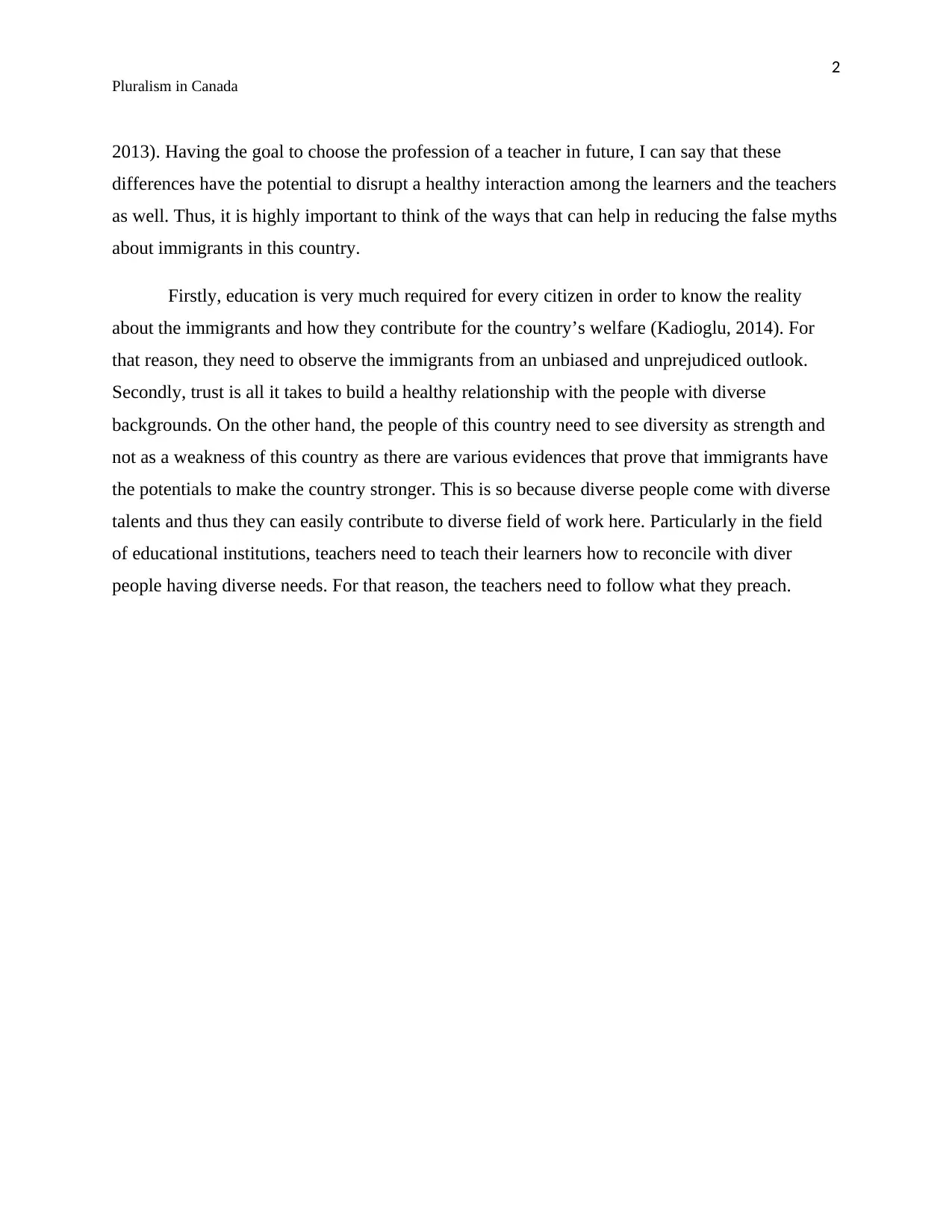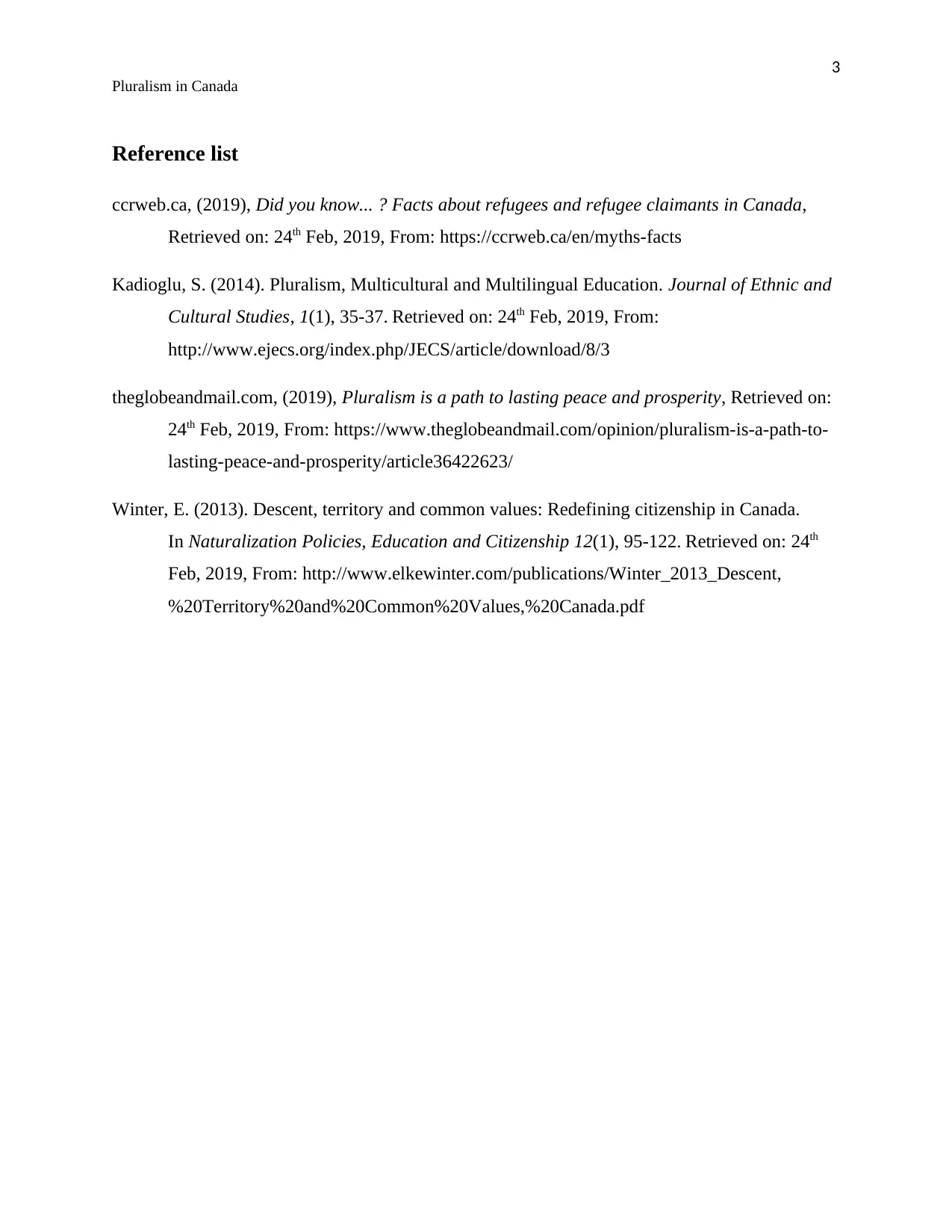Multiculturalism and Pluralism in Canada: A Discussion
VerifiedAdded on 2023/04/22
|4
|891
|376
Discussion Board Post
AI Summary
This discussion post examines the concept of pluralism in Canada, a society known for its diversity, where various racial, social, ethnic, and religious groups coexist. The post defines pluralism and discusses its positive aspects, highlighting Canada's multicultural environment. It addresses common myths about immigrants, such as the false association with increased crime rates and the belief that refugees exploit the system. The author, aspiring to be a teacher, emphasizes the importance of education and trust in reducing these myths and fostering healthy interactions among diverse learners. The post suggests that unbiased observation and the recognition of diversity as a strength are crucial for promoting reconciliation and understanding. The author references the Truth and Reconciliation Commission's calls to action and underlines the role of educators in addressing the needs of diverse populations.
1 out of 4











![[object Object]](/_next/static/media/star-bottom.7253800d.svg)